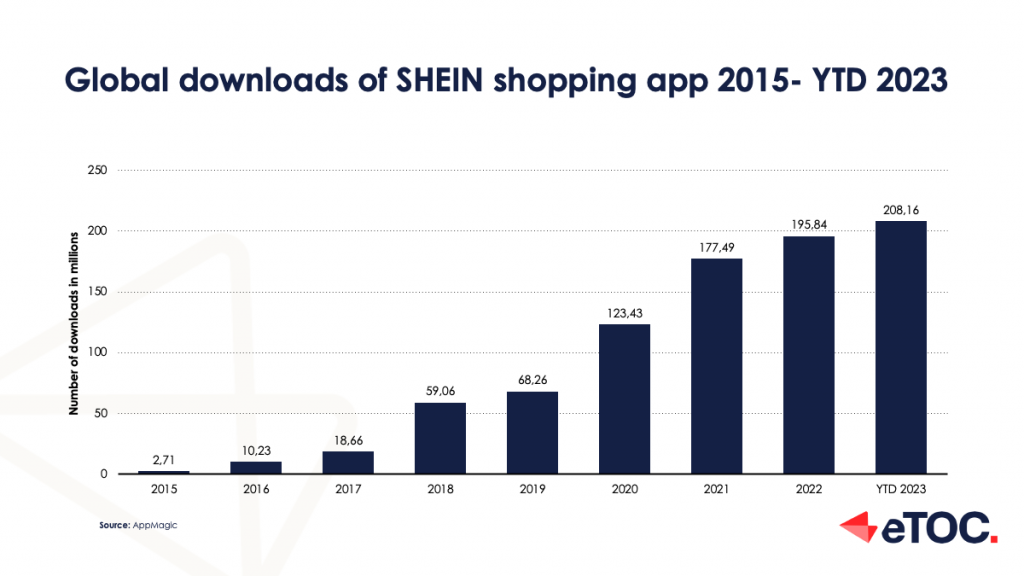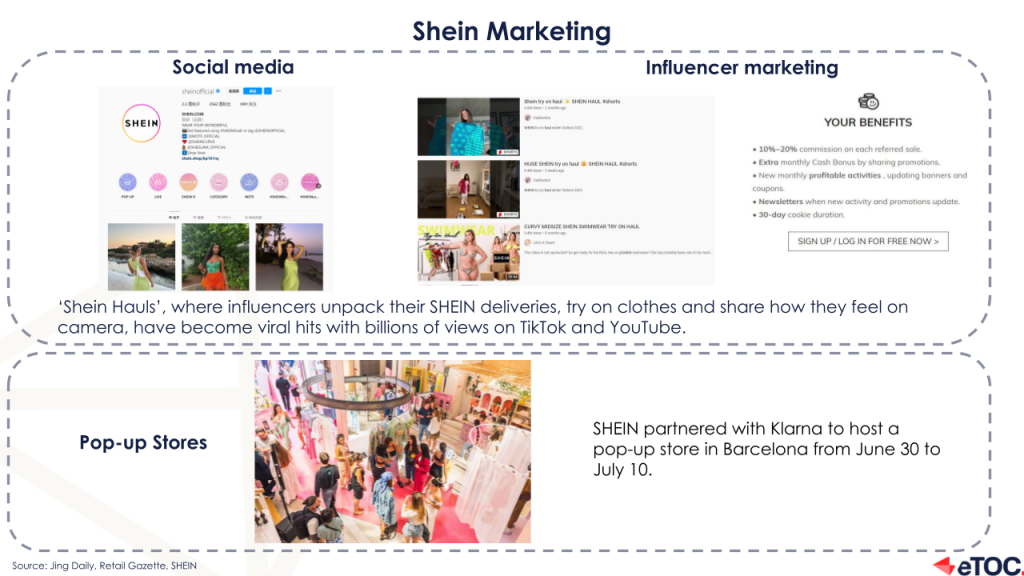SHEIN: The eCommerce Titan Remodeling the Landscape

Founded in 2008 and headquartered in Nanjing, China, SHEIN has evolved into a formidable force in the e-commerce industry, swiftly overtaking giants like Amazon, Zara and H&M. As a cross-border fast fashion company initiated by XU Yangtian (Chris Xu), SHEIN’s market influence is palpable, particularly in the western world. Its innovative strategies and consumer-focused approach have earned it a top spot in the hearts of millions.
The Meteoric Rise
SHEIN, originally dubbed SHEINside, underwent rebranding in 2015. The change was not just in name, but also in strategy, propelling its already impressive growth to new heights. With sales rocketing from $1 billion in 2017 to a whopping $16 billion in 2021, SHEIN has consistently demonstrated its prowess in the fast fashion segment. In 2022, it dominated app installs globally with 229 million downloads, only second to Amazon in the U.S. market.
The company’s American influence is noteworthy. In the realm of apparel, SHEIN boasts a staggering 40% market share in the U.S. It’s not just about numbers, though; the company also forges strategic partnerships, such as its collaboration with China Southern Airlines Logistics, to bolster its shipment capabilities to Europe and the US.

Keys to Success
1. Real-time Fashion:
SHEIN has elevated “fast fashion” by swiftly pinpointing fashion trends and condensing manufacturing processes. Its data-driven approach and a 2,000-member design team facilitate the release of 6,000 new items daily – a feat unparalleled by its competitors.
2. Pricing:
One of SHEIN’s irresistible draws is its affordability. Prices are typically a third of that of industry bigwigs like H&M and ZARA.
3. Advanced Supply Chain:
SHEIN collaborates with about 5,000 small suppliers primarily situated near Guangzhou, streamlining operations with its proprietary digital management system.
4. Consumer-Centric Warehousing:
Focused on customer satisfaction, SHEIN uses its overseas warehouses chiefly for returns, facilitating the secondary sale of returned items. This approach, combined with generous return policies, encourages bulk purchases, thereby increasing the average transaction value.
5. Tech-savvy Marketing:
With 25 million followers on Instagram and 4.6 million on TikTok, SHEIN’s social media presence is colossal. They’ve embraced influencer marketing and even ventured into pop-up stores in global fashion capitals.

6. Data and Technology:
SHEIN’s success isn’t just about fashion; it’s about data. By harnessing real-time information, it gauges product performance, ensuring popular items are readily available and phasing out the less popular ones. Its algorithms offer personalized shopping experiences, further deepening customer loyalty.
Challenges and Adaptations
No company, however large, is without challenges. Allegations have marred SHEIN’s reputation, from accusations of violating Chinese labor laws to intellectual property theft. Recognizing the need to address these issues, SHEIN set up a $50 million fund in June 2022 focused on global textile waste management. They also unveiled the SHEIN X designer incubator program in 2021, aiming to nurture and support upcoming designers.
Furthermore, in 2022, SHEIN was estimated to have generated $30 billion, marking a significant 91% increase from its 2021 revenue.
A New Era in e-commerce
The recent information reveals that SHEIN’s influence is not waning. By applying “aggressive methods” combined with a cutting-edge system, SHEIN delivers high-quality products like 16-euro jeans with substantial profit margins. Their agile adaptation to market trends, rooted in their vast data analytics capabilities, sets them apart. The Chinese model of e-commerce, centered on gamification, chats and significant emotions, allows consumers to not just shop but also be entertained and inspired.
As other eCommerce giants grapple with the challenges of a transforming market, SHEIN’s strategy is to offer a shopping experience, mirroring the age-old brick-and-mortar model where shopping was a family event, brimming with surprises.
Conclusion
While challenges like sustainability and accusations of unethical practices persist, SHEIN’s story is a testament to innovation, adaptability and understanding the pulse of the consumer. As they gear up to expand further into Europe, the global e-commerce space is in for an exciting era, where the fusion of technology, fashion and customer experience will redefine success.

Discover the Future of Shopping with "Shopatainment – The Future of Shopping"
Our new book “Shopatainment – The Future of Shopping” explores how the innovative fusion of shopping and entertainment is revolutionizing the way we shop. Learn about the origins of this trend in China, the technologies and formats being used, and the opportunities and challenges it presents for the West.

Want to expand to the Chinese market? Contact us for a first free consultation.
